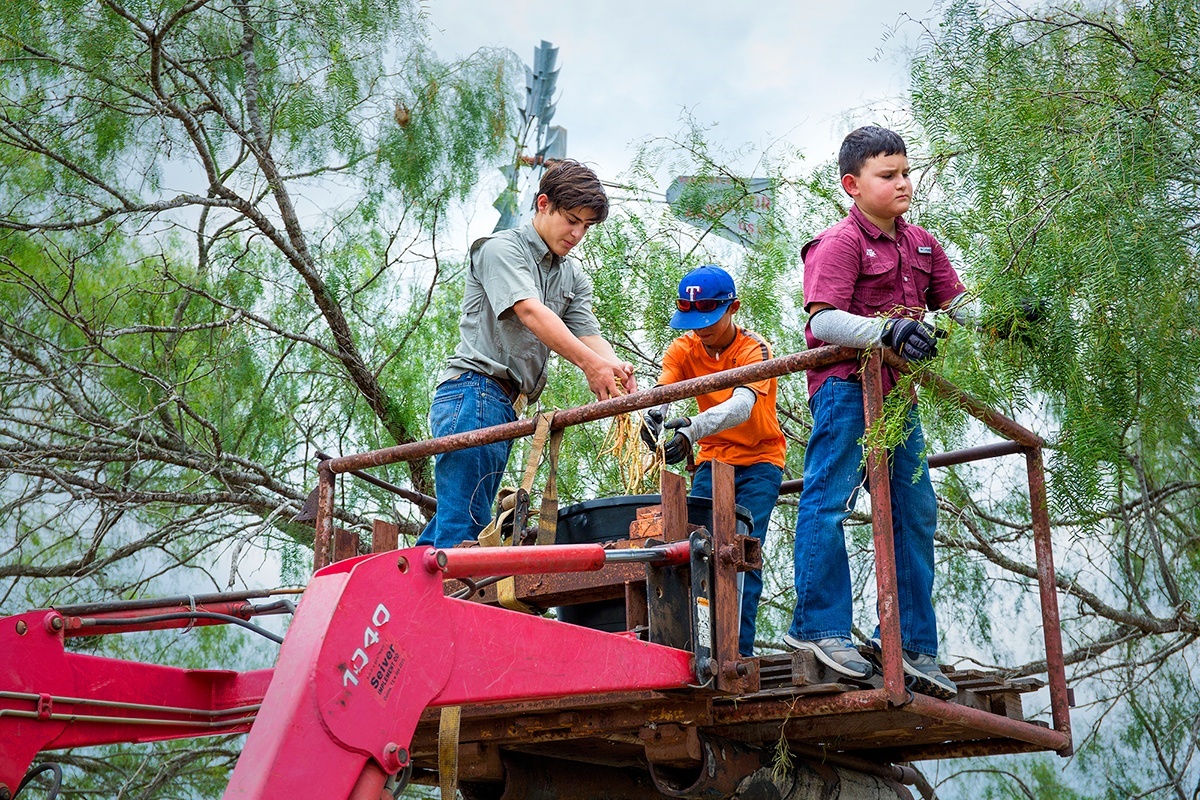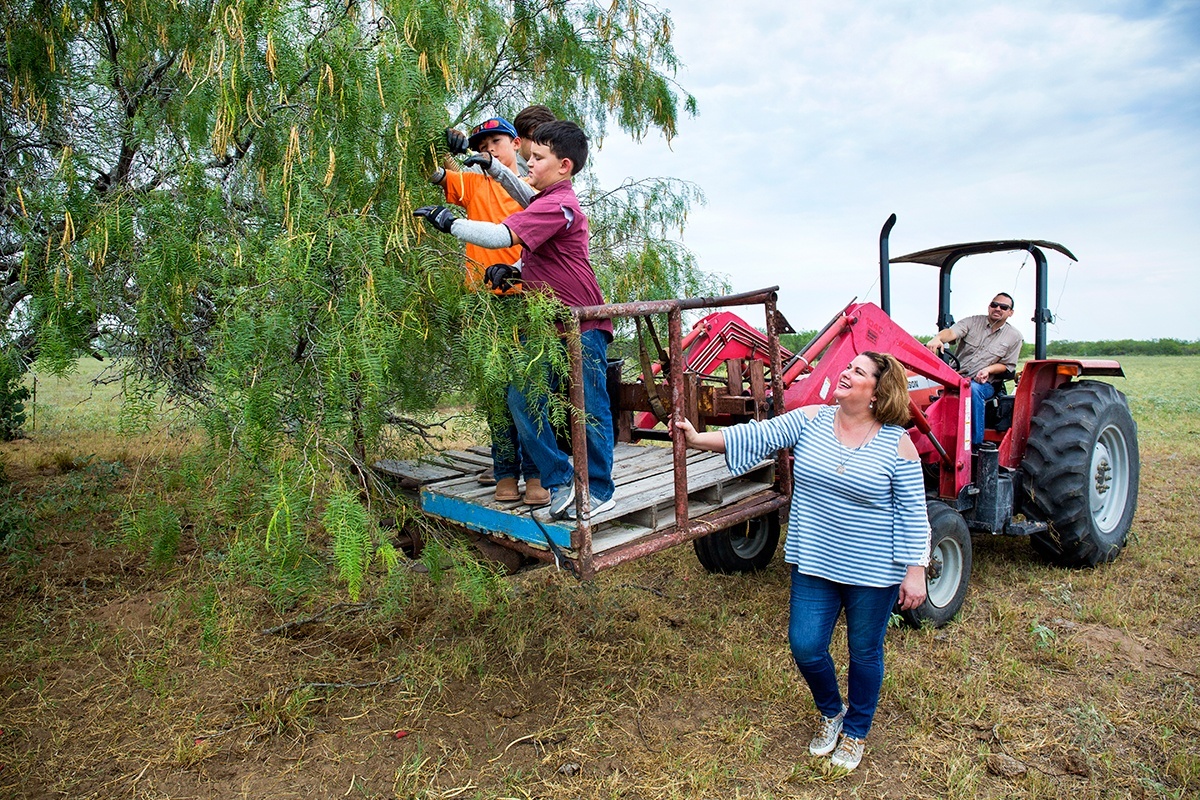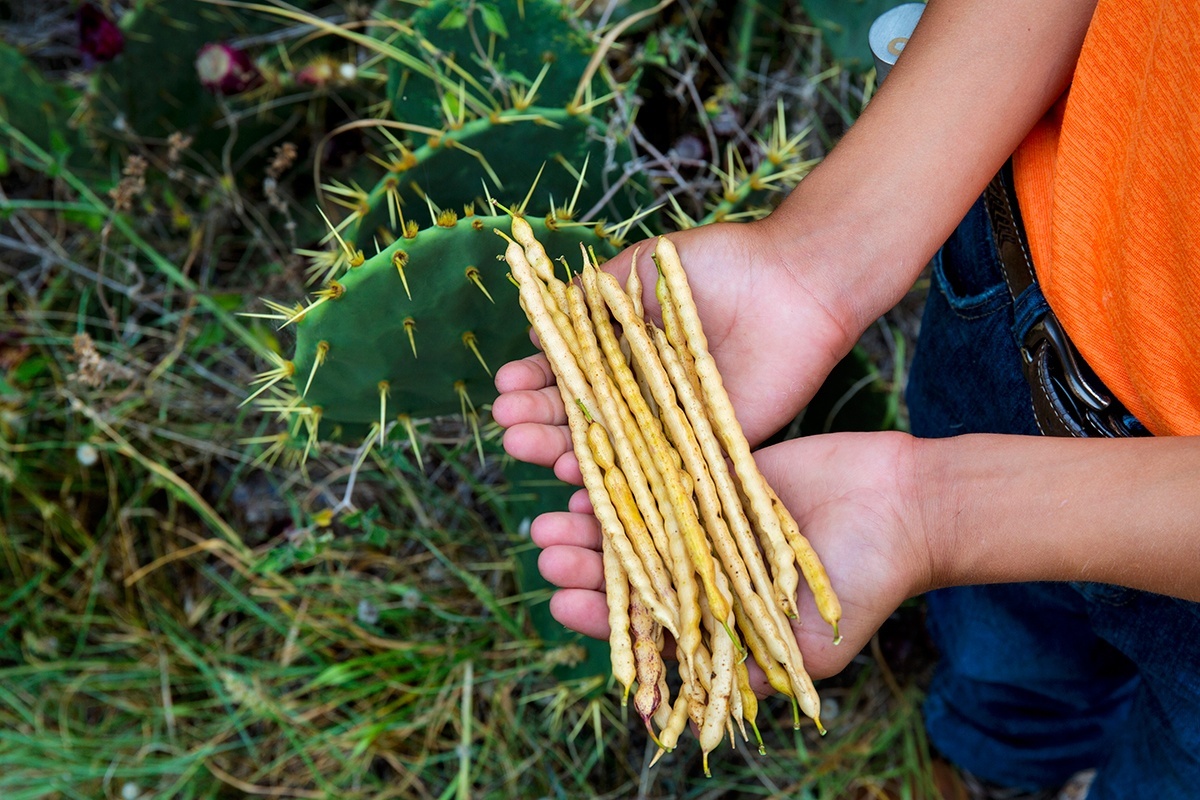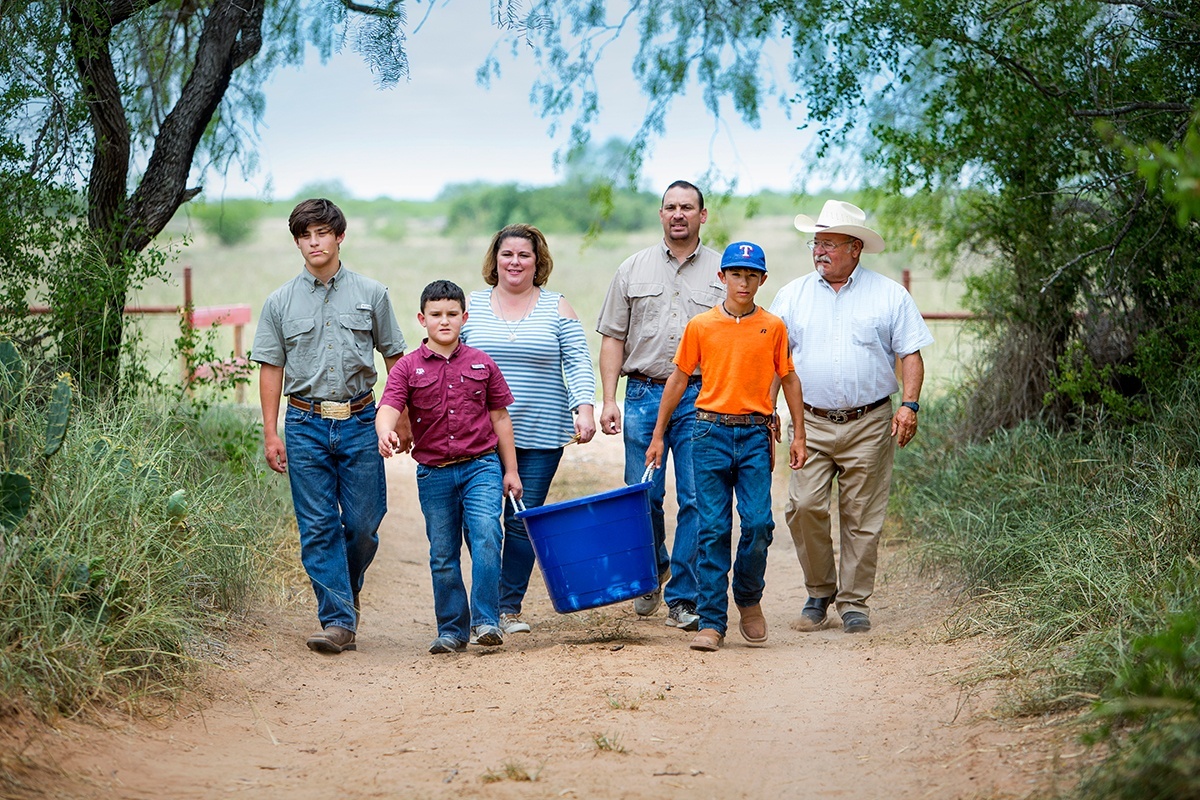A tantalizing aroma floats through Victoria Cappadona’s kitchen, where mesquite bean pods are simmering. She offers me a taste of the warm Cappadona Ranch mesquite jelly she creates from an infusion of mesquite pods mixed with lemon, sugar and pectin. The silky, amber jelly melts on my tongue and makes me want to eat it by the spoonful. Imagine honey collected from hives in a sun-drenched grove of flowering mesquites.
When city girl Victoria Barrera from McAllen married into a Hidalgo County ranching family (members of Magic Valley Electric Cooperative), she asked her father-in-law about uses for all the mesquite beans. Fred Cappadona told her that cattle and wildlife eat them. Years ago, he explained, he heard stories about Native Americans and early settlers making flour from the pods and medicinal remedies from the tree’s leaves, sap and bark.
In 2012, while researching traditional uses of mesquite, Victoria Cappadona found that mesquite concoctions, lotions and teas had long been used for fevers, burns, wounds, headaches, eye inflammations and digestive problems. The potential use of mesquite beans in recipes captured her attention.
“Who would have thought mesquite would be so amazing a food? The shell is what has the natural sugar and flavor of the mesquite,” she explains. “The natural fructose means it doesn’t initially require insulin to break it down. And since it takes hours to metabolize, you don’t get sugar spikes.” Nutritional studies have revealed that mesquite beans have a low glycemic index and are high in fiber, calcium and iron.
Victoria Cappadona perfected a mesquite bean jelly recipe and made jars for family and friends. As demand soared, she developed another mesquite jelly with chile pequin that balances sweet and hot. She designed the Cappadona Ranch Mesquite Bean Jelly logo and began selling both varieties at livestock shows, festivals and online.
“Many older people say, ‘Oh, my gosh, that jelly reminds me of when I was a kid chewing on a mesquite bean,’ ” said Cappadona’s husband, Justin. And her father, a retired physician, recalled eating mesquite pods as candy. That’s no surprise, since the pods’ sugar content can reach 30 percent.
During June and July, the Cappadonas and their three sons—Cayetano, 15; Federico, 13; and Vicente, 10—harvest mesquite beans on the 2,500-acre ranch. “A good mesquite looks like a Christmas tree covered in golden pods,” she said. Justin Cappadona drives the front-end loader fitted with a railed platform where the boys stand and harvest the beans. In 2016, they picked enough to fill sixteen 55-gallon drums. That supplies enough for all the flour, tea, coffee and jelly they produce in a year. About 2 pounds of beans can be simmered into enough jelly for more than 100 eight-ounce jars.
“The kids are learning responsibility and the value of a dollar,” Victoria Cappadona said. “We have a limited window for picking, so when there is work to be done, they need to help out. When they are involved, they appreciate the results more.”
Victoria Cappadona sun-dries the pods and stores them to make jelly year-round. “Heaven knows we have enough mesquite trees to do that.” Previously, even after doubling production every year, she ran out of jelly before Christmas. She has moved the operation to a commercial kitchen in McAllen to accommodate growth.
The website, cappadonaranch.com, offers Victoria’s video recipes, including mesquite flour pancakes. “The nut-flavored flour, ground from the whole bean, is great for baking and gluten-free,” she said. “You replace one cup of wheat flour with one-quarter to one-half cup of mesquite flour. The pancakes taste so nutty and sweet, they don’t need syrup.”
An accident led to another tasty product. “The boys were squabbling, a delivery man was at the door and beans were drying in the oven. When I got back to the beans, they were roasted,” Victoria Cappadona said. Recalling a story that Civil War soldiers made camp coffee from roasted mesquite beans, she decided to grind the pods in a coffee grinder and brew them. The result was a savory, high-protein coffee substitute. She also ground roasted mesquite seeds for tea. “With their natural sugar, the tea and coffee provide an energy rush without caffeine.
“We suspected mesquite’s nutritional value was remarkable, but we wanted proof—and got it,” she said, thanks to a McAllen Chamber of Commerce Innovation Grant. It enabled Cappadona Ranch to order nutritional studies that cost $1,000 per product. A USDA Value-Added Producer Grant helped buy ingredients and packaging. The brand participates in the Texas Department of Agriculture’s Go Texan program, which promotes the state’s products.
While cattlemen might have a love-hate relationship with the mesquite tree itself, Cappadona Ranch has transformed the tree’s beans into delectable native Texan foods.
——————–
Eileen Mattei, a member of Nueces and Magic Valley ECs, lives in Harlingen.





